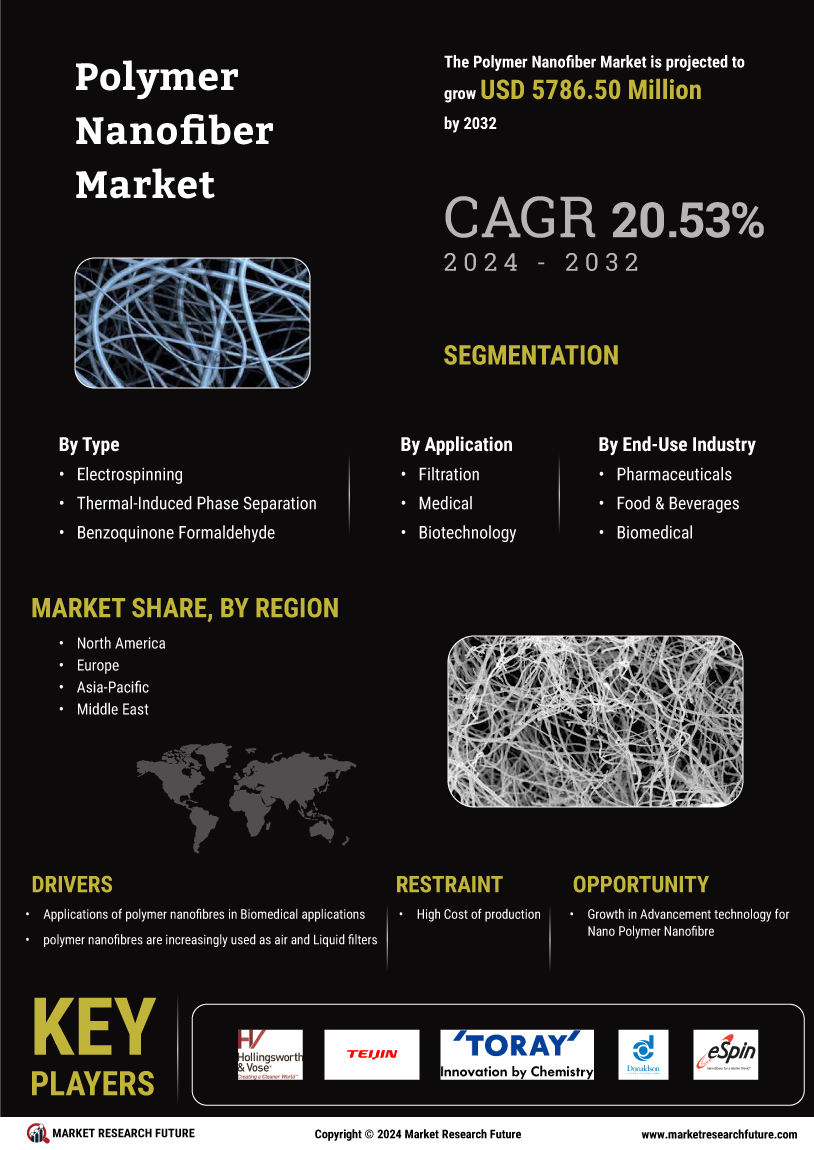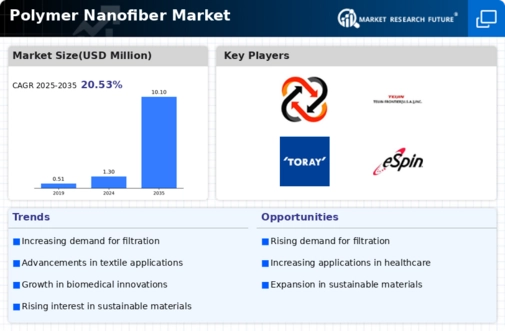POLYMER NANOFIBRES ARE INCREASINGLY USED AS AIR AND LIQUID FILTERS
Polymer Nanofibers are widely applied as coatings to enhance the filtration capacity of filtration substrates. Many factors collectively contribute to increasing adoption of polymer nanofiber based filteration solutions in air water and purification of medical devices and industrial process. They efficiently block the passage of germs, viruses, and dust particles because to their unusual physical features, including as a large surface area and a networked structure. Nanofibers are used in liquid filtration techniques to remove impurities from water, drinks, blood, chemicals, fuel, and oil.
When compared to conventional filtration systems, the special characteristics of nanofibers, such as their high porosity, interconnected pore structure, and design flexibility, help to save energy, reduce pressure drop, and enhance filtering efficiency. During the anticipated term, these benefits are anticipated to fuel market expansion.
In addition, users now tend to maintain better cleanliness, especially in the wake of the COVID-19 epidemic. After seeing the pandemic's wrath, people are now conscious of the need for a clean and sterilized workplace. As a result, there is a rise in demand for filters that remove particles from the air and water. People are becoming more concerned about indoor air quality because of the worsening worldwide air quality caused by rising pollution, which is raising demand for air filters.
Due to a variety of variables, including a higher standard of life, more discretionary money, and rising urbanization, the Asia-Pacific market appears to be lucrative, hence fuelling the market for Polymer Nanofiber revenue.
Moreover, need for air and water quality along with focus on sustainability has led to increase use of polymer nano fibre in air and water filtration system nanofibers are effective at capturing pollutants and contaminants making them vital for Environmental Protection. However, government support through research grants funding and initiative aimed at promoting nanotechnology research and developments can drive innovation and market growth in polymer nano fiber sector which drives the global market.
APPLICATIONS OF POLYMER NANOFIBRES IN BIOMEDICAL APPLICATIONS
Applications of polymer nanofibers in biomedical applications are a significant driver in the global polymer nanofiber market. These remarkable materials have found extensive use in various biomedical fields, ranging from tissue engineering to drug delivery and wound healing. One primary application lies in tissue engineering, where polymer nanofibers act as scaffolds for cells to grow and regenerate damaged tissues. These nanofibrous scaffolds mimic the extracellular matrix's structure and mechanical properties, providing an ideal environment for cells to adhere, proliferate, and differentiate.
This enables the development of functional tissues and organs, making polymer nanofibers a critical contributor to regenerative medicine and the treatment of various medical conditions.
In addition to tissue engineering, polymer nanofibers play a crucial role in drug delivery systems. Their high surface area, porous structure, and tunable drug release properties make them excellent candidates for controlled drug delivery. Researchers have developed nanofiber-based drug carriers that can release drugs at a controlled rate, enhancing treatment efficacy and reducing side effects. These drug delivery systems have been particularly valuable in cancer therapy, where precise drug targeting is crucial. The versatile nature of polymer nanofibers in this regard drives the demand for these materials in the biomedical industry.
Furthermore, polymer nanofibers are employed in wound healing applications, contributing to their prominence in the biomedical sector. Nanofiber-based wound dressings provide an environment conducive to faster healing and reduced infection risk. The nanofiber's high porosity and breathability promote moisture management, helping to maintain a moist wound environment for optimal healing. The enhanced antimicrobial properties of some polymer nanofibers further contribute to wound care. These applications demonstrate the significant role that polymer nanofibers play in improving healthcare and addressing various medical challenges, thus driving their demand and market growth in the biomedical sector.
The Global Polymer Nanofiber Market is poised for expansion, driven by increasing applications in filtration, biomedical, and energy sectors, reflecting a growing recognition of their unique properties and potential benefits.
U.S. Department of Energy





